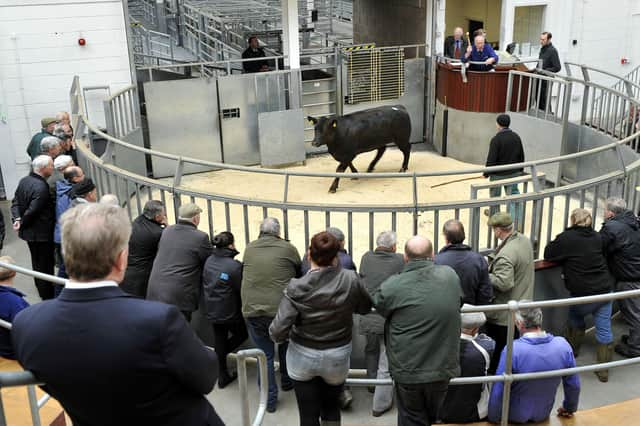Faming: I’m so glad the hammer fell on auction market reports - Andrew Arbuckle


These reports conveyed the trade to those livestock producers unable to attend the actual sale. Even if the reports were normally tucked away at the foot of the page, they were closely scrutinised by enthusiasts to see who was getting the top prices and for those leading the sale. There was a prestige in doing so among farmers.
At that basic level, market reports were admirable. Cattle, sheep and pig producers could check the trade and make their marketing decisions. In farmhouses throughout the land, newspapers used to be read at the breakfast table, not for the wars or civil unrest in the streets on the front pages but deep in the paper on the farming pages to see who topped the local weekly sales.
Advertisement
Hide AdAdvertisement
Hide AdAny errors in reporting such sales would be followed up by an angry phone call to the farming editor pointing out the gravity of such a mistake. Sometimes as I innocently attended a farmers’ meeting, I would be accosted by an angry producer asking if I was aware that the market report, three weeks earlier, had contained an error.
More usually the complaint was about omitting the complainant’s moment in the spotlight after his pen of store cattle had made the third best price in the market that day.
The market reports were also scrutinised by auctioneers either to check on what the opposition were up to or to be used as ammunition when they went canvassing for stock for future sales.
However, without regular monitoring, the straightforward intention of carrying information could be corrupted with a little imagination. Numbers of animals entered in a sale could be nudged upward to give an impression of a market’s popularity. If entries were low, one auctioneers’ trick was to mention every beast that went round the ring.
The reporting system used to be at the end of a sale it was delegated to the apprentice auctioneers to compile the report which was then dictated to the copy typists employed by newspapers in pre-electronic days.
These typists were expert in taking down farm names, but mistakes happened. Thus, a well-known farm called Phantassie sometimes appeared in the newspaper report as Fantasy.
This system of collecting and transmitting who had made the top money was not foolproof as after one sale in the old Edinburgh market, two novice auctioneers wearying of their task used their imagination and started making up prices and sale categories.
The next day the newspaper carried the report which started as normal with the prices for fat cattle, then moved on to the values of store cattle. Sheep were next and then the prices for pigs
Advertisement
Hide AdAdvertisement
Hide AdAt this point the young trainees’ imaginations had kicked in and they started to invent new categories. They suggested that ‘totty wee pigs’ were being bid to xx per kilo, despite there being no such pigs around. It was only a short stretch of their imagination to make a price for ‘even tottier wee pigs’ and so on into complete absurdity with a category of ‘still to be born totty pigs’ being listed as worth 50 pence each.
Next morning, the mart manager read the report and saw prices for animals that had never graced his sale ring appearing in his market’s report. The pair of miscreants were carpeted and warned of the gravity of their crime, but both went on to have stellar careers in the industry.
So where do livestock producers go nowadays to find out the trade for store cattle, or prime sheep? They click on their mobile phones and check the market reports posted electronically.
This has also removed any disputes about favoritisms among auction companies as each organisation can post up lengthy paeons of praise for the livestock they have traded. I mention that as on one pre- electronic occasion I was accosted by an auctioneer who complained that a rival company had a report an ‘whole inch longer in column length’ than his business.
To prove his point, he produced a ruler and proceeded to measure the offending article
And that is why I do not miss market reports
Comments
Want to join the conversation? Please or to comment on this article.